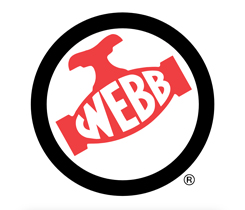EIA: US natural gas plant liquids production continues to hit record highs
Data from the U.S. Energy Information Administration (EIA) show how natural gas plant liquids (NGPL) production, including propane and butane, continues to grow from domestic sources.
Since 2012, when horizontal drilling and hydraulic fracturing techniques became more common, U.S. production of NGPL has significantly increased, averaging 4.3 million barrels per day (bpd) in 2018, up from 2.5 million bpd in 2012. Nearly three-quarters of U.S. NGPL production is concentrated within six producing regions.
The Permian, Eagle Ford and Appalachian regions made up more than half of all U.S. NGPL production in 2017. An additional one-quarter of NGPL production was located in three other regions – the Anadarko Basin in western Oklahoma and Texas; the Bakken play in North Dakota and eastern Montana; and the Green River, Piceance, Uinta and Paradox basins in the Western Rockies region of Utah, Wyoming and Colorado.
NGPL production has generally increased across all regions since 2012 as production of natural gas has grown. The largest increase has been in the Northern Appalachian region, where production increased from 43,000 bpd in 2012 to 512,000 bpd in 2017. NGPL production has doubled in both the Permian Basin in western Texas and southeastern New Mexico and the Eagle Ford play in southern Texas from 2012 to 2017. NGPL production in the Bakken play more than tripled.
Natural gas requires processing before entering interstate natural gas pipelines. The raw, or wet, natural gas includes methane – the primary component of delivered natural gas – as well as NGPLs such as ethane, propane, normal butane, isobutane and natural gasoline. Once impurities such as water, hydrogen sulfide and carbon dioxide are removed from the wet natural gas, the mixed NGPLs are transported for further processing at fractionation plants that separate the NGPLs into distinct commodities.
In most production regions, NGPLs must be shipped by pipeline to fractionation centers, such as Mont Belvieu, Texas, and Conway, Kansas, both of which act as storage, distribution and pricing hubs for NGPLs. Northern Appalachia is one of the few areas that fractionate NGPLs in the same region where they are produced.
NGPLs typically sell at higher values than methane on a heat-content basis because they are priced against crude oil-derived fuels. The yield of these liquid products can vary depending on the constitution of the raw natural gas, the technology used to extract NGPLs at processing plants and the NGPL market prices and demand, especially for ethane. The domestic and international markets for individual NGPL products have grown with increased U.S. NGPL production, as these liquids are used for feedstock in manufacturing plastics and resins.
In 2017, the U.S. volume-weighted average yield of NGPLs from raw natural gas was 84 barrels per million cubic ft. (b/MMcf) of processed natural gas. The Bakken generates the highest NGPL yield, or richest natural gas, with an average of 143 b/MMcf. Raw natural gas from the Permian and Eagle Ford yields 95 b/MMcf and 107 b/MMcf, respectively. At 31 b/MMcf, the Western Rockies raw natural gas has the lowest NGPL yield. Producers will generally prioritize production from richer formations to maximize NGPL yields unless they lack the infrastructure to process wet gas and transport the liquids to market.
* Featured image: EIA
















